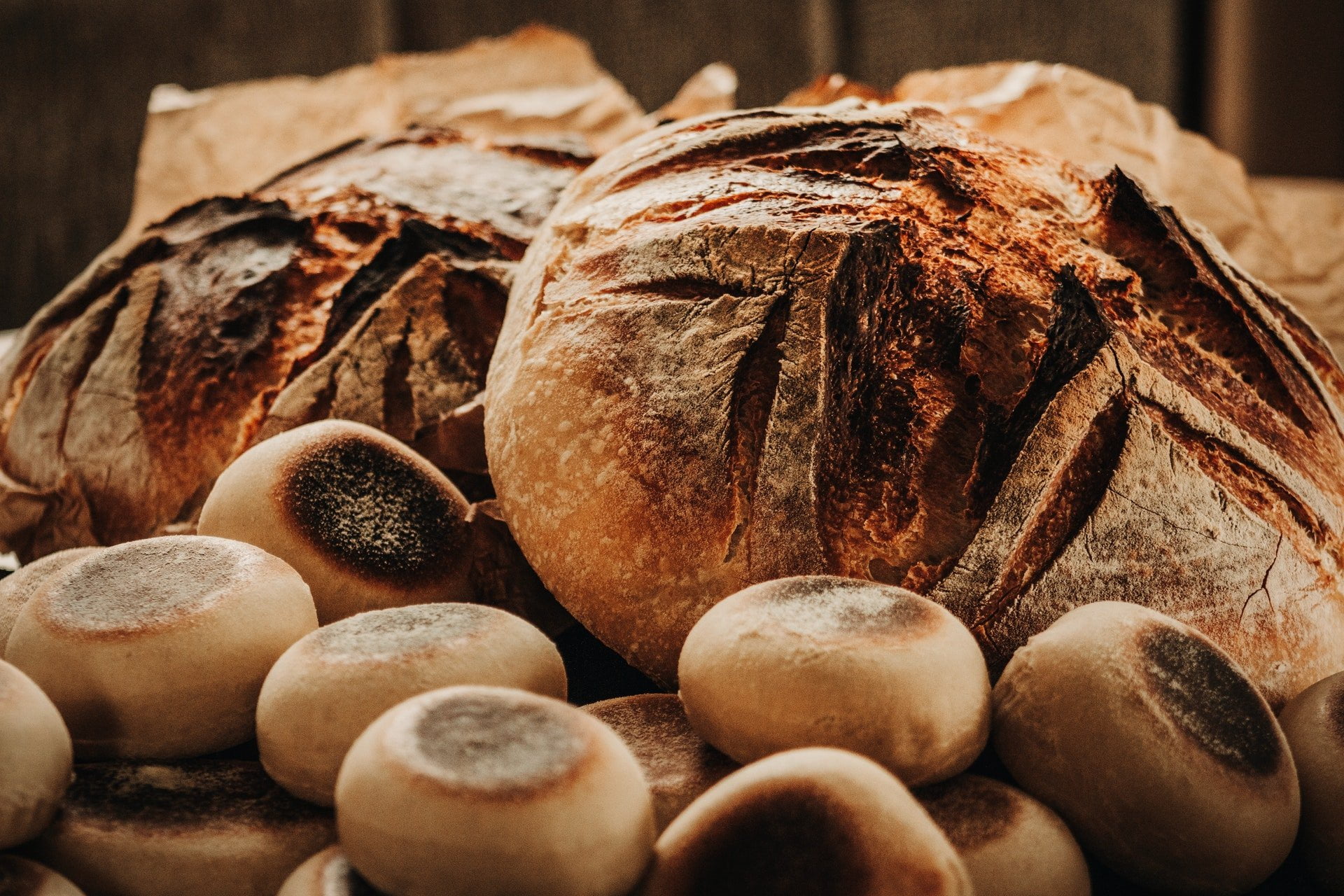7 Genius Ways to Store Sourdough Bread

As a child, my Mum used to bake fresh wholewheat bread for us every week. Loaves for toast in the morning and rolls to take to school in our packed lunches. How lucky were we?
It wasn’t until later in life that I appreciated the time, love, and energy she put into this weekly ritual. When I eventually had kids of my own, I started to fully understand my Mum’s drive to ensure her kids were consuming as few preservatives as possible.
To be honest, I think my Mum was a little ahead of her time on that one. But one thing that hasn’t changed is the fact that we still don’t really know what’s in those commercially made sliced loaves of bread. Why is it they can last for weeks on end without going moldy? The mind boggles.
Now, in my 40’s, I understand the cathartic, almost meditative process of making bread with your very own hands. There’s something about the tending of the sourdough starter, and the mixing, kneading, and proving processes that exercise your patience, encourage you to slow your pace down a little, and then when you pop that fresh, oven-warm, buttered bread in your mouth, well, frankly, there’s nothing quite like it!
But there’s no denying that bread-making is an effort. It requires time from your already overloaded schedule. For that very reason, not a crumb, a slice, or a badly sawn-off chunk (usually hacked by your bread-knife-wielding child) should be wasted.
But what’s the best way to ensure that your precious home-baked, crusty sourdough bread stays fresh for as long as possible?
Why does sourdough bread keep for longer than normal bread?
Unlike bread that uses conventional yeast, sourdough bread has some natural protection against the drying and molding processes that can turn a freshly baked, crusty loaf from crunchy and soft to hard and stale in less than a few days.
This is because the sourdough starter contains lactic acid bacteria, which makes the dough acidic and thus acts as a natural preservative against molding. As a result, sourdough bread should last for four to five days at room temperature before starting to stale.
That said, it is important to store your bread after baking correctly to ensure that it tastes crisp, chewy, and absolutely delicious until the very last mouthful. So here are our favorite ways of storing sourdough bread and keeping it from molding.
1. Don’t slice your sourdough bread immediately
Yes, we know: the temptation of biting into freshly baked bread can be hard to resist. But if you achieve the impossible, you’ll actually find that your sourdough bread will last much longer.
It’s all down to a nifty bit of science. As the bread cools, the starch within the bread begins to harden. If you slice it open too quickly in your haste for a warm, buttery slice of bread, you can actually cause the inside of the loaf to turn sticky by halting the hardening process that should continue until the loaf is cold. This can alter the texture (yuck!) and even result in the bread turning stale much faster.

Our top tip, therefore, is to leave the loaf to cool for a couple of hours before diving in. Trust us: it’ll be worth the wait!
2. Leave it cut side down on a breadboard
One of the simplest methods of storing bread isn’t actually a form of storage at all. Freshly baked sourdough can be left out on the countertop for a day or two before using any of the rest of the methods in this guide.
After cutting into the loaf, the crucial step is to ensure you leave it cut side down on your breadboard or chopping board. This stops the inside of the bread from interacting with the air and going dry, while the crusty outside acts as its own natural barrier against the moisture in the air, remaining deliciously crunchy.
3. Use beeswax wraps for natural storage
Ok, so it’s day two after baking and you want to preserve your sourdough exactly as it is. We’re probably biased, but in our experience, the best way of keeping your sourdough bread tasting as fresh as the day it was baked is by wrapping it in a beeswax wrap. Made from organic cotton, beeswax, tree resin, and organic coconut oil (that’s all we’re telling you, the rest is a closely guarded secret!), our 100% organic, natural, and plastic-free beeswax wraps work by creating a second, breathable skin around the loaf.
Small rolls and loaves can be wrapped in a standard beeswax wrap or beeswax food bag, while larger loaves will fit better in a 40cm x 50cm Big Daddy bread wrap. Simply wrap your bread like a birthday present — only, forget the sticky tape and string — the warmth of your hands is all that’s needed to make the wrap stick together and create an airtight seal around your bread.
Not sure about leaving your bread outside for curious fingers (or fluffy paws) to get at? Using beeswax wrap to store freshly baked bread is a tried and tested method, too — just allow the loaf to cool first before wrapping it in a beeswax wrap. (Learn more from our beeswax wraps FAQ page!).
4. Invest in a bread box for storing your sourdough
For the most traditional means of storing bread, look no further than a breadbox. Customarily made from wood or metal, they’re designed to allow air to circulate within. This keeps your bread in tip-top condition by retaining enough moisture to stop your bread from drying out but allowing the rest of it to escape, thus making sure that your bread doesn’t soften and instead retains its signature crunchy texture.
If using a breadbox, always keep the cut side of the bread facedown to prevent the air from getting into the loaf — the crust acts as its own barrier against the ingress of air and should stop it from going stale for many days.
5. Avoid plastic bags
While loaves bought from your nearest supermarket might come in a plastic bag, don’t be fooled by this packaging. Not only are single-use plastic bags a terrible idea for the environment (and cutting them out is an easy way to turn your kitchen into a plastic-free zone) but they’re a big no-no when it comes to sourdough bread storage. Sure, they’ll stop your bread from going moldy. However, by keeping your loaf inside them you’re sacrificing literally the best thing since sliced bread: the crispy crust.

It’s all because plastic bags aren’t breathable, which means they’re a recipe for your homebaked sourdough going completely soft.
6. And stay away from the refrigerator
Another place you should keep far away from your sourdough bread is the fridge. While it’s the perfect storage facility for fresh fruit and vegetables, when it comes to bread, it’s the completely wrong location.
No, bread doesn’t last longer in the fridge. This is because fridges are great at drying the air inside, removing the moisture from your bread, and seeing it turn stale even more quickly than if it was out in the air on your countertop.
7. Freeze it for longer-term storage
If you like making homebaked bread but want to ensure there’s always some on hand at a moment’s notice, then you’ll want to keep some frozen, ready for toasting. The best way to freeze sourdough bread is in slices.
First, allow the dough to cool completely before slicing. This is to ensure that there’s no moisture left inside the loaf that can cause condensation and ruin the crispness of the crust. Wrap the slices carefully using your beeswax wraps and pinch together the edges of the wrap to ensure that there’s no entry point for air into your bread. Once you’ve done this, pop the wrapped slices into the freezer, and voila: freshly baked bread for toasting at a moment’s notice and which should last at least a month or two.

Want to freeze an entire loaf? Allow it to cool completely and wrap it snugly in beeswax wrap as above before putting it into your freezer. When the time comes to eat it, let it defrost thoroughly on your kitchen counter overnight.
To make it as crispy and tasty as the day it was first baked, sprinkle it with water and throw it in the oven for around 15 minutes at 350°F (175°C). This should crisp the crust back up again; just leave it to cool before slicing into it and even you won’t be able to tell that the bread has been frozen since it was first baked!




